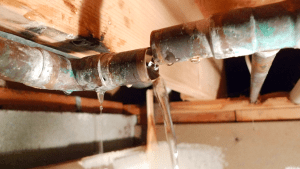Six Methods to Spot Hidden Water Line Leaks Successfully
Six Methods to Spot Hidden Water Line Leaks Successfully
Blog Article
This great article following next involving Hacks to detect leaks is highly insightful. Check it out yourself and figure out what you think of it.

Early detection of dripping water lines can minimize a potential disaster. Some little water leaks might not be noticeable.
1. Examine the Water Meter
Every house has a water meter. Inspecting it is a proven manner in which helps you uncover leakages. For beginners, shut off all the water sources. Make sure no person will certainly flush, use the faucet, shower, run the washing equipment or dishwasher. From there, go to the meter and watch if it will certainly transform. Given that no one is using it, there ought to be no motions. That suggests a fast-moving leak if it moves. Similarly, if you detect no changes, wait a hr or two and also inspect back once again. This indicates you might have a slow leak that can even be below ground.
2. Check Water Usage
If you spot unexpected modifications, despite your consumption being the exact same, it implies that you have leakages in your plumbing system. An unexpected spike in your costs suggests a fast-moving leak.
A steady rise every month, even with the very same practices, reveals you have a slow-moving leak that's additionally slowly rising. Call a plumber to completely examine your building, particularly if you really feel a warm location on your floor with piping beneath.
3. Do a Food Coloring Examination
When it comes to water usage, 30% comes from toilets. Examination to see if they are running appropriately. Drop specks of food shade in the container and also wait 10 mins. There's a leak between the storage tank as well as dish if the shade somehow infiltrates your dish throughout that time without flushing.
4. Asses Exterior Lines
Do not fail to remember to examine your outside water lines also. Should water seep out of the connection, you have a loosened rubber gasket. One small leak can squander bunches of water and surge your water costs.
5. Examine and also Analyze the Scenario
House owners ought to make it a behavior to check under the sink counters and also inside closets for any kind of bad odor or mold and mildew development. These 2 warnings show a leakage so timely interest is required. Doing routine examinations, also bi-annually, can save you from a major issue.
A lot more notably, if you understand your house is currently old, maintain a watchful eye on your heating units, hose pipes, pipes etc. Look for discolorations as well as compromising as many home appliances and pipes have a life span. They will also naturally weaken as a result of damage. If you presume dripping water lines in your plumbing system, don't await it to rise. Call an expert plumber today so you do not end up with a terrible mess in your house.
Early discovery of dripping water lines can reduce a possible catastrophe. Some small water leaks may not be noticeable. Inspecting it is a surefire method that helps you find leaks. One small leak can lose heaps of water as well as spike your water expense.
If you think dripping water lines in your plumbing system, don't wait for it to escalate.
How to Know If Your Home Has a Hidden Leak
Water Meter Reveals Inexplicable Water Usage
If you’d like to test whether or not there’s a leak somewhere in your home, you can do this using your water meter. Here is how to conduct the test:
Don’t use any water in your home for at least 30 minutes; this also means not turning on faucets or water-using appliances.
Go outside, and check your water meter for activity.
If your water meter shows that there was activity, even though no one was using any water, this proves that there is a leak in your home.Visible Mold or Mildew Growth
Leaks behind walls create moist, dark environments that allow mold and mildew to grow and thrive. Eventually, you might see mold growth forming on the wall closest to a hidden leak.
If mold is growing in an area that receives a high amount of moisture, such as a bathroom, it may simply be an indication that better ventilation is needed. However, if you see mold growth on a wall or the ceiling in an area where you would not expect, you probably have a hidden leak.
Musty, Mildew Odor
Sometimes you might not be able to see the mold or mildew that is growing as a result of a leak. However, the smell can give the problem away just as easily. If you catch a whiff of something musty, there’s a good chance that old water is collecting somewhere in your home that you can’t see.
Stained/Warped Walls, Ceilings, or Floors
When your home soaks up water, a variety of red flags can become visible, including ceiling stains, bubbling drywall, warped walls, and sagging floors. While these issues can be caused by excess humidity, they can also be signs that a pipe or plumbing connection has started leaking behind your walls.
Inexplicably High Water Bill
After a while, you get a general sense for what your water bill should be. If you own a pool or sprinkler system, your bill will tend to be higher during summer. However, if you receive a water bill that seems especially high, and you can’t figure out what caused it, then you may have a hidden leak somewhere that’s increasing your bill.
https://www.plumbingjoint.com/blog/2019/july/how-to-know-if-your-home-has-a-hidden-leak/

As a keen person who reads about Hacks to detect leaks, I was thinking sharing that piece was worthwhile. Loved our blog entry? Please share it. Let others discover it. I appreciate reading our article about Hacks to detect leaks.
Opt for our expert plumbers. Report this page